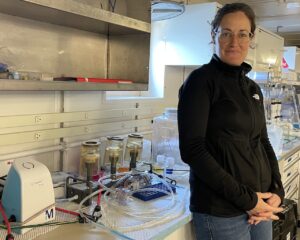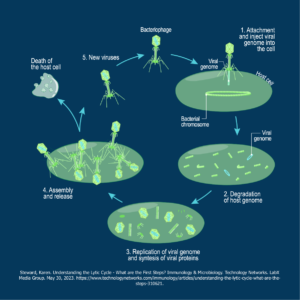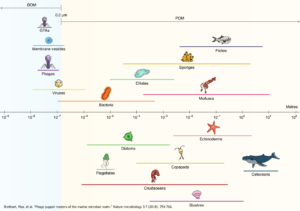Wednesday, May 31, 2023 – Offshore North Pacific Coast (42.57.313 N, 124.34.661 W)
Microbes Under Attack

Remember 2020, when a tiny little virus caused the world to take a pause? It is difficult to concede that a small .2um (micrometers) virus could wreak such havoc on our society. According to Chana Kranzler (Assistant Professor from Bar-llan University in Israel), there are millions of viruses in a single drop of seawater. Luckily, the majority of viruses pose no threat to humans. By design, viruses can only attack specific cells that are deemed to be host cells to the virus. Think of it as trying to put a square peg in a round hole. Once the virus attacks a host cell, the virus takes over the host’ DNA so the virus can reproduce and release more viral attackers to other host cells. (See Figure 14)

Most humans have experienced the wrath of a viral infection. Suffice it to say, we are not alone. The phytoplankton communities are also subject to attacks by viruses, as well as other toxins found in seawater. Chana Kranzler is investigating the interactions between Diatoms (single-celled photosynthetic organisms) and Viruses. According to Chana, “As the concentration of phytoplankton increases [during the upwelling bloom], we expect viral infection to become more prevalent and plan to study changes in viral infection dynamics.” She hopes to track patterns of viral infection as upwelling continues to support the bloom to better understand when, where and why viruses infect diatoms in the ocean.

